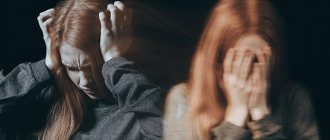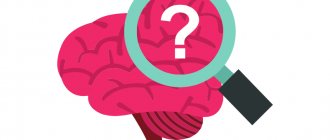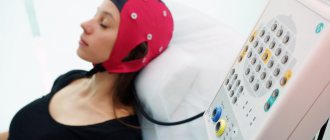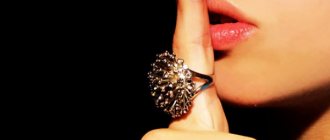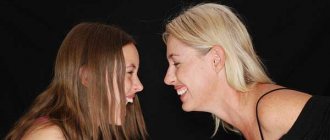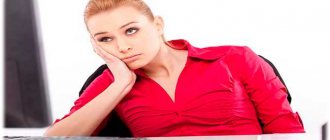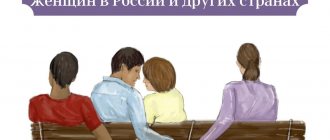Hello dear readers. Many of us have various kinds of fears, but there are those that at first glance seem unthinkable and far-fetched to us, but this is not so. A phobia is a mental disorder accompanied by unreasonable fear. It is common for a person to be afraid of something if a situation or circumstance threatens life or puts us in danger. However, a phobia is a fear that has no rational basis.
Scientists count more than 40 thousand phobias, and their number is only growing every year. Some are afraid of ghosts, some are afraid of heights, others are terrified at the sight of insects. But there are also the most unusual fears, for example, trypophobia.
What is trypophobia, how does it manifest itself, what symptoms indicate the presence of a mental disorder, and how to deal with this illness, you will learn in this article.
All photos that can cause an attack of trypophobia, so as not to harm you, I hid under spoilers! Open and look at these photos only if you are sure that they will not harm you!
What is trypophobia and who are trypophobes?
The term "trypophobia" comes from gr. τρύπα - hole and φόβος - fear. That is, in simple words, it is a fear of holes. Although this phobia is not classified as a type of mental disorder, about 16% of people on the planet suffer from the disease.
Trypophobes experience overwhelming horror and disgust at the sight of a cluster of small holes on something. To understand how developed this fear is in a person, you need to have a trypophobic experience. For example, true trypophobes, when they see cluster holes (a collection of holes and bumps on any surface), experience anxiety, disgust and irrepressible fear. Some develop a panic attack, and even a catatonic stupor.
Today, scientists are actively studying the topic of trypophobia, conducting numerous studies and tests that help people with a fear of holes overcome unpleasant sensations.
What is the most common cause of hole phobia?
Trypophobia in humans is caused by intolerance to any kind of holes and openings. Unfortunately, this disorder is much more serious than one might think. Trypophobes are afraid of anything that may contain many holes: coffee foam, pasta, honeycombs. A striking example of disgust for trypophobes is the seemingly harmless lotus fruit. The presence of round holes causes disgust and anxiety in people.
Even biological materials can cause fear and nausea in trypophobia sufferers. These include human skin (pores, for example), trees, insects and even stones, rocks with pronounced cluster holes.
The most severe case is the fear of holes in food. People suffering from trypophobia react especially negatively to waffle cakes, pancakes, cheese, cucumbers, strawberries, and even citrus fruits. Any hint of a cluster of holes will immediately turn you away from using the product.
Photo of a honeycomb.
Historical roots of trypophobia
In fact, every person, to one degree or another, experiences a dislike for a large accumulation of holes and holes. But healthy people who are not susceptible to trypophobia can easily switch their attention to other details. A trypophobe will not be able to stay in the place where his phobia was identified. He will want to leave the room or place as soon as possible.
Previously, scientists assumed that the fear of holes was inherent in humans by their ancestors. They explained the gene for fear of the accumulation of holes simply: the bodies of dangerous animals, for example, the octopus, posed a direct threat to our ancestors. Spiders and sea creatures had round holes on their bodies. Therefore, even an ordinary person may experience discomfort at the sight of some animals.
Scientists from the University of Essex have established a direct connection between pathogenetic fear. People have an instinctive tendency to reject certain visual images that could previously cause harm to health. We associate objects that cause fear in trypophobia with spots on the surface of the dermis, which are present in most poisonous animals and insects.
Therefore, we inherited from our ancestors a kind of instinctive mechanism: to feel disgust at the sight of such objects. However, such a genetic property can be aggravated by traumatic circumstances and cause a pathological fear of any kind of holes.
There is also another hypothesis for the appearance of trypophobia. It is connected with the work of our brain. According to this theory, we associate cluster holes with infectious diseases or the consequences of skin trauma.
For example, a wasp sting automatically causes an allergic reaction to the insect's venom in a person. The skin becomes blotchy and we can clearly see enlarged pores. Knowing that this is accompanied by pain and discomfort, we subconsciously avoid everything that could cause us harm. The same applies to the consequences of a disease such as measles. The skin becomes covered with pimples, and the holes are clearly visible. This, perhaps unconsciously, leads us to the conclusion that many holes are a possible health hazard.
Trypophobia in the modern world
To date, the medical association does not classify trypophobia as a type of disease. Cluster hole phobia is not a medical condition. However, this does not mean that phobias are not studied by researchers, scientists and psychologists.
Unfortunately, the phobia presented is also not given due attention. And all because there are not so many people with pronounced symptoms. Despite such circumstances, England is actively studying the issue of trypophobia and conducting tests at universities to study the human psyche.
Photo of cells.
Susceptibility to illness
The most common everyday things can trigger an attack of trypophobia: natural phenomena, food, animals, plants, insects, external manifestations of any diseases. What exactly will be the provoking factor for the fear of cluster holes is unknown. The most powerful impact is exerted by:
- multiple passages of insects or their larvae, honeycombs, wasp nests;
- corn cobs, ripe sunflower heads;
- holes in cheese, baked goods, foam on milk or coffee, aerated chocolate;
- Suriname tropical toad;
- geological or architectural objects;
- problematic skin, rashes, acne, enlarged pores, blackheads.
The first manifestations of fear of holes should not be taken lightly. Over time, it progresses, and attacks occur more often. Stimuli can cause visual hallucinations in the form of clustered holes on one's own body. Such visions provoke panic attacks, a desire to take off one’s skin or hide.
Symptoms of trypophobia
As I wrote above, many people feel a slight dislike when they see holes. Even the accumulation of larvae, worms, or anthills can cause us anxiety and anxiety. We will want to leave the place where the hidden threat or unpleasant picture is located. But with trypophobes everything is much more complicated.
The first symptoms of trypophobia
Recognizing them is not so difficult. The main thing is to realize that such a problem really exists. The disorder can be identified by observing two elements, namely:
- Visual perception of clusters. Directly when you see an unpleasant image near you;
- Bodily sensations, i.e. the feelings you experience when visually examining an object.
The brain of trypophobes, when they see holes, immediately gives a signal to their internal systems about the onset of danger. Symptoms of this condition are accompanied by:
- Rapid breathing. Shallow and rapid breathing indicates that a person is wary of clusters;
- Tachycardia. A person may experience rapid increases in blood pressure and rapid heartbeat;
- Lack of oxygen. The trypophobe begins to breathe deeply in order to “breathe”;
- Often, such people begin to rapidly sweat and dry out their mouths. This is another important sign of trypophobia.;
- Nausea. A more serious symptom is the onset of nausea, which in some cases may be accompanied by vomiting. By the way, this reflex was conceived by nature for a reason. A person frees himself from everything unnecessary so that it is easier to escape from danger.
One has only to see something cellular and a person will immediately feel uneasy.
The most obvious symptoms of fear of holes
- Itching on the body. First, the patient begins to scratch his neck (the most vulnerable place), then his arms, and his torso. The itching does not stop for a long time, which in turn causes nervousness and irritability;
- Dizziness. Due to lack of oxygen, a trypophobe may experience clouding in the head. Black spots often appear in the eyes, which also cause hostility and fear in the patient. This may lead to fainting;
- Panic attack. In this case, the trypophobe may behave inappropriately, try to hide from the holes, hide in a corner and cry. A panic attack can manifest differently for each person. Some take a passive position and experience horror alone, while others show aggression and rage.
Most often, the consequences of trypophobia are accompanied by a rash on the skin and hands. After encountering cluster holes, the patient may notice red spots on the body on a bodily level. But over time, they go away without the use of any medications or ointments.
All symptoms can be combined, or just one may appear.
Research results
It has been noticed that the symptoms of fear of holes are more pronounced in the afternoon than in the morning. This may be due to excess adrenaline and the body’s desire to use it up.
Scientists have found that all the unpleasant symptoms that accompany trypophobia are the brain’s reaction to potential danger. It is worth noting that any other phobia causes only fear, while a person suffering from a fear of holes experiences disgust and physical discomfort.
The attack is accompanied by the release of an additional portion of adrenaline into the blood. This leads to some dependence. A person wants to relive those vivid impressions again and again. For this reason, he strives to find some pictures on the Internet created using Photoshop. To get rid of such a disorder, you need to break this endless circle and return the individual to normal.
Types of fear of hole congestion
Today, there are two types of trypophobes. This aspect should be discussed in more detail to make it easier to diagnose the type of disease in the future.
Cutaneous trypophobia
This type of patient cannot tolerate bodily harm. Trypophobia on the body is probably one of the most unpleasant types of fear, as a person experiences panic, horror, nausea and disgust at the sight of:
- Acne or various types of pimples on the body;
- Sebaceous glands and wide open pores;
- Scars left after acne;
- Necrosis of the dermis.
It is not possible for a trypophobe to withstand all these physical circumstances. Considering that skin problems, to one degree or another, occur in all people, trypophobes have a hard time. Moreover, some patients even narrow their social circle and prefer homework to group work. With such asociality, the help of a specialist is necessary. I will describe below who you should contact.
Photo of a hand.
Cluster trypophobia
This type includes all other types of holes. These include:
- Food products (bread, buns, coffee, pasta, etc.);
- Sponge algae;
- Some types of flowers and seeds, as well as trees;
- Tunnels that were created naturally by insects or animals.
One way or another, with cluster trypophobia, a person can avoid meeting potential danger. That is, the patient may not buy scary products, not look at them in the store (although sometimes this can be difficult), and avoid wild nature.
Photo of a porous chocolate bar.
General manifestations
It’s scary to think, but approximately every seventh inhabitant of the Earth sees a real and inexplicable threat in porous chocolate, honeycombs or lotus fruit.
The first reaction to seeing cluster holes, in any of their manifestations, is an alarming state. With further contact with the irritant, other signs begin to appear. This psychosomatic deviation can be expressed by the following symptoms:
- growing fear, reaching the point of panic;
- increased sweating;
- overly pale or red skin;
- skin rashes;
- unstable heartbeat;
- trembling of the whole body or just the limbs;
- irritability and uncontrollable aggression;
- urge to vomit;
- muscle spasms, cramps;
- acute headache;
- loss of orientation.
A person suffering from trypophobia experiences a special, piercing, vivid feeling of disgust or disgust at the sight of a cluster of holes or tubercles.
Causes of phobia of holes and holes
The main researchers of the strange mental reaction to multiple holes, Arnold Wilkins and Jeff Cole, noted that the term “phobia” does not accurately explain the patient’s condition. The opinion of psychologists has come down to the fact that they do not see fear in this disease, but rather disgust and disgust.
If you type “What is trypophobia” or “Trypophobia test” on the Internet, you will be asked to watch a thematic video series on cluster holes. Any footage that graphically depicts hands in honeycombs or wide holes on the hands, face, and body in general will cause disgust and hostility even in a mentally healthy person.
Postmodern artists painted hands and bodies riddled with holes and worms, which looks more like a sick fantasy of the author than an aesthetic artistic masterpiece. And here the question arises by itself: what comes first – multiple holes that cause fear or such images created by someone’s fevered imagination?
It is worth noting that researchers at the University of Essex also identified signs of trypophobia. Thus, from the proposed pictures, where both cluster holes and other images were presented, they noted that the first made them feel disgusted, but the second did not.
British scientists interpret trypophobia as an “evolutionary gene” that we inherited to help us survive the sight of poisonous animals and insects.
Photo of a honeycomb.
Trypophobia: causes of pathology
Trypophobia, like many phobias, develops for inexplicable and spontaneous reasons. However, very often there is a mental, hereditary, age-related and cultural explanation for the appearance of this type of fear.
Cultural factors that cause the development of trypophobia are the opinions and views that arise in any specific cultural associations or groups. Often this phobia manifests itself in a strictly defined social situation. In some cases, trypophobia is characterized by a hereditary predisposition.
At the source of its development are family relationships, and the progression of the phobia is influenced by external events in family life. Often the cause of hostility towards cluster holes is childhood trauma. It happens that trypophobia manifests itself after some time, with age. In this case, its manifestations depend on life experience and lived situations. It is well known that as a person grows older, he tends to accumulate fears.
Stages of trypophobia
Of course, this is a mental problem. Accordingly, help needs to be provided to overcome this unmotivated fear. Today there are three types of trypophobia:
- Light form. When a person sees an object of fear, he begins to get nervous and experience anxiety, for example, looking at chocolate or coffee foam;
- Medium shape. In this case, the patient experiences persistent disgust, nausea, and sometimes itching may begin;
- Severe form. A person experiences unbridled fear, leading to a panic attack. Semi-fainting and fainting conditions may also occur.
In any case, with mild or severe trypophobia, you need to take measures to alleviate your condition.
Don't be afraid to see a doctor!
What is phonophobia?
Phonophobia is a (neurotic) anxiety disorder that is part of a group of specific phobias characterized by a fear of loud sounds. In extreme cases, it takes the form of fear of one's own voice. The term phonophobia comes from the Greek words phn, phnma, which mean sound, voice, and phobos, which translates to fear.
It is also called ligyrophobia or acousticophobia. A feeling of anxiety can appear not only as a result of the direct action of the anxiety factor, but also sometimes as a result of its image. For example, the sight of a person inflating a balloon to a size at which it might burst creates an alarming situation, since patients can anticipate the noise that may accompany it.
How to Diagnose Cluster Hole Fear
Considering that today it is impossible to diagnose “trypophobia” due to its not being included in the medical classification of diseases, the disease is classified as obsessive-compulsive disorder. Accordingly, diagnosis and treatment are the same as recovery methods for other types of phobias.
Today, the diagnosis of the condition is carried out by a psychotherapist or psychologist. The only difference is that the first has the right to prescribe drug therapy in the form of sedatives and stronger drugs, while the second does not have such powers.
It depends only on your symptoms which specialist is preferable to go to. However, it should be noted that even with a severe stage of the phobia, taking pills does not guarantee complete relief from the disease. In this case, it is better to find a good specialist who can correctly diagnose your condition and prescribe competent therapy.
Photo of a cellular plant.
What symptoms occur during an attack of claustrophobia?
The main symptom of an attack is irrational fear, which the patient practically cannot resist, although he realizes that the danger to him in this situation is minimal. It is accompanied by the following autonomic symptoms: • Tachycardia (rapid and increased heartbeat). • Breathing disorders - it becomes more frequent and is accompanied by a feeling of lack of air. • Trembling – the patient literally shakes with fear. • Increased sweating. • Dizziness with lightheadedness.
These symptoms may also be accompanied by abdominal discomfort in the form of nausea, pain in the epigastric region, and gastrointestinal spasms. This is reminiscent of the so-called “bear disease” (irritable bowel syndrome), often triggered by severe stress. Autonomic failure can be so severe that it can lead to dangerous arrhythmias, temporary cessation of breathing (patients feel as if they have stopped breathing) and even loss of consciousness.
Should fear of holes be treated?
A person must answer this question for himself. It is advisable to treat a phobia if it interferes with life, causes discomfort and life seems hopeless. I have already written above about the stages of trypophobia. But as practice shows, even with a mild form of phobia, not only the mood, but also life in general deteriorates.
If you feel that you cannot ignore the smallest details that you associate with clusters, it is better to consult a psychologist. This is a sure sign that you yourself cannot cope with obsessive fear.
Reasons for fear of men
The most common reason may be the first love experience, which most often ends in the separation of lovers.
During adolescence, people are more likely to commit some unpleasant actions and say a lot of thoughtless words. Guys hurt girls with their rudeness, not caring about their feelings. Consequently, female representatives, not finding reciprocity, draw their own conclusions. And the result of this can be injuries that turn into mental disorders. The causes of androphobia are always psychological in nature and are most often rooted in the past. Other reasons could be:
- negative memories from childhood, where the disrespectful attitude of the brothers, the humiliating treatment of the father towards the mother, the divorce of the parents emerge;
- An upbringing in which restrictions were introduced on communication with men and its inconsistency with the conditions of real life;
- experienced an unpleasant experience of sexual relations with a man, betrayal, rape;
- watching an excessive number of films and programs related to violence and cruelty;
- in general, fear of communicating with other people.
Treatment of trypophobia
Any psychological and mental illness does not have a single therapeutic program. Each patient is individual, and the approach to solving the problem is selected taking into account the person’s medical history. There are currently three types of treatment for trypophobia. Let's look at them in more detail.
Pharmacological.
Accompanied by taking sedatives, antihistamines or stronger drugs. Drug therapy is justified only if the patient experiences bodily sensations (itching, dizziness, loss of consciousness). This therapy is aimed at quickly relieving the symptoms of trypophobia, but is not curative.
To reduce the severity of cephalgia of psychogenic etymology and attacks of headaches, short-term courses of anxiolytic drugs, such as benzodiazepine tranquilizers, are used.
For mild symptoms of trypophobia, it is important to prescribe sedatives to improve the patient’s sleep. If the phobia is accompanied by seizures or convulsions, the doctor has the right to prescribe anticonvulsants.
The pills are aimed at relieving symptoms, not treating.
Psychotherapeutic
The work of a psychologist is to normalize the patient’s mental state by conducting a psychotherapeutic course. In this case, there is no clear method of the session, since the psychologist creates the course, taking into account the patient’s condition.
One proven practice is to reduce the symptoms of a panic attack. The patient is offered a series of pictures that evoke peace and aesthetic feelings. Along with inspiring images, the psychologist also shows the object of the patient's fear, and then again calming fragments. Gradually, the specialist increases the duration of display of cluster images, replacing them with pleasant pictures. The presented technique includes proper breathing.
When seeing both images, another trigger begins to go off in the patient’s head: “it’s not as scary as it seems.” The results of such sessions are truly fascinating. Most trypophobes experience a decrease in the intensity of their anxiety reactions, and also gain control over their own behavior.
Perhaps the best way to overcome trypophobia.
Hypnosis treatment
Sometimes a destructive thinking program is so deeply embedded in the psyche that it is not possible to identify it in a waking state. Hypnosis techniques are used to treat panic attacks and aggressive conditions. What is its essence?
Sometimes a person himself cannot truly understand the reason for his fear. Unreasonable worries can be identified in the subconscious, which is impossible to reach in wakefulness. The specialist reduces the control of a person’s consciousness, plunging him into a hypnotic trance, after which he corrects the “plan” of the subconscious.
During a natural half-asleep state, a hypnologist can reveal the true mechanisms of progression of trypophobia. In this state, the hypnologist instills a motivating attitude to eliminate defective thinking structures and introduces a new, constructive model of behavior.
Hypnosis can sometimes help.
Causes of trypophobia
Various hypotheses have been put forward regarding the causes of trypophobia. British scientists Cole and Wilkins believe that it is based on man’s primitive fear of poisonous flowers, animals, and insects. Researchers suggest that trypophobia is an evolutionary advantage for humans. The “pattern” for reacting to objects with holes, in their opinion, was laid down back when any hole in a tree, rock or ground hid a danger to humans.
Other scientists argue that the presence of this phobia is associated with the characteristics of upbringing, the influence on a person’s consciousness of traditions, culture, and characteristics of the nationality to which he belongs.
Another cause of trypophobia is psychological trauma received by a person during his life.
Also called the cause of trypophobia is a genetic predisposition to this type of fear.
The development of trypophobia can be provoked by:
- holes in food (pancakes, baked goods, cheese, veins in meat, honeycombs);
- holes in plants (lotus flower, seeded sunflower flower, peeled corn cob, any pods);
- openings of living organisms (pores, acne, blackheads, pockmarks on the skin);
- natural holes (sea sponges, corals, holes made by larvae, holes in fossils and rocks).
World research on trypophobia
To this day, scientists and psychologists debate how serious trypophobia is. Some believe that this is an obsession, others that it is a mental disorder. But in order not to scare all people, signs of trypophobia in a person are a normal phenomenon.
If you, for example, look at skin eaten away by worms, this will automatically cause rejection and hostility in you. So there is no need to be ashamed of this circumstance. What looks unpresentable, ugly or disgusting causes an understandable reaction in our brain.
Trypophobes, on the other hand, experience an irrational fear of any kind of holes. This is the main feature of the disease. Worldwide research on trypophobia is currently being actively conducted by scientists and psychologists. Despite the fact that there is a category that suffers from this phobia, it is impossible to find a single treatment method.
The human psyche is individual. Some course will be useful for one patient, but not for another. Therefore, a competent psychologist works with the patient individually.
Photo of coral.
Who are trypophobes?
▪️ Let's figure out who trypophobe is and what his main fear is. The fear of small holes seems funny, but not to a trypophobe. He sees danger in it, and experiences the whole range of negative emotions, from simple discomfort to loss of consciousness.
▪️Few ordinary people, seeing many holes in the ground, will stick their fingers there. After all, there may be snakes, spiders, or other dangers. He will simply turn around and walk away from this place. The reaction of a trypophobe will be slightly different.
▪️Most psychiatrists assure that trypophobes are ordinary people with extreme disgust. This is not considered a deviation, but with trypophobia, the disorder can progress. Only when the patient reaches a severe stage will psychiatrists take care of him, but not before. Progressive researchers call for stopping the disorder at an early stage, avoiding serious changes in consciousness that are difficult to treat.
Trypophilia is the opposite of trypophobia
Indeed, today there is an unofficial name for another deviation opposite to trypophobia - trypophilia. In this case, a person, on the contrary, experiences a craving for all sorts of clusters of holes, both on the body and on other surfaces. This is also a kind of psychological addiction. A person, looking at lotus fruits or honeycombs, not only does not feel disgust, but, on the contrary, contemplates them and, if possible, even picks at the holes. The phobia of holes gives way to dependence on holes.
Both trypophobia and trypophilia are not normal conditions for humans. The severe stage of tripophilia involves self-harm. Some people deliberately pick holes on their bodies and enjoy the look of them. So, both phobia and addiction have a destructive effect on a person’s outlook and life as a whole.
Photo of a manicure with cells.
Trypophobia on the skin: photo
Trypophobia, which occurs when seeing skin lesions, is associated with the fear of dangerous skin diseases. Scars, wounds, and sores on the body give rise to a feeling of disgust in impressionable people.
Trypophobia on the skin
Even decorative, artificially applied “wounds” to the skin can cause panic in a trypophobe.
Decorative holes on the skin causing trypophobia
Books about trypophobia
Today there is a lot of psychological literature that helps people get out of difficult situations or look at their lives from a different “angle.” To date, no books have been published about trypophobia, although the work of experts in the field of psychology has improved significantly.
Still, trypophobia is a rather rare disease, but, nevertheless, it deserves no less interest, since ordinary people suffer from unmotivated fear. If you clearly understand that you have such a phobia, then the best way to get acquainted with the possible causes is to visit the office of a psychologist or psychotherapist.
And know that any mental circumstance necessarily has a basis. Despite the fact that the psyche does not hurt, like, for example, the stomach or head, it needs healing. Consider that this is another organ of ours that needs to be monitored and cared for.
Where does fear come from?
Scientists have not yet come to a consensus on what causes this phobia. 4 theories have been put forward , each of which provides its own explanation of the phenomenon:
- Biological: Our brain is constantly assessing reality to identify danger. This ability is inherent in us by nature and is called the instinct of self-preservation.
The holes themselves do not pose any threat, but, not seeing anything “positive” in them, the body classifies them as dangerous and tries to avoid them.
- Psychological : an individual may be afraid of absolutely all holes due to associations with negative experiences. For example, he could have been bitten by bees while trying to take honeycombs from a hive, or he witnessed the following picture: trypophobia occurs as a result of psychotrauma .
Interestingly, the situation itself can be repressed from memory, but the emotional memory will be triggered every time a person sees many holes. - Hereditary : This version suggests that a child whose parents (or one of them) suffers from trypophobia will also be afraid of the accumulation of holes in later life.
There is a simple explanation for this: children copy the behavior of adults, accepting as truth everything that is conveyed to them in the family. And if mom and dad demonstrate that cluster holes are scary, the offspring will fit this belief into their picture of the world. - Strong impressions can also trigger this phobia. In childhood, a child absorbs everything he sees, and if he is also suspicious (what is this?) and anxious, then a documentary about spotted frogs or an unpleasant photograph can be etched in his memory for a long time.
Symptoms
Phonophobia manifests itself in a variety of psychosomatic diseases. In response to an active anxiety stimulus, the patient reacts with extremely strong, irrational, involuntary fear. He loses control over his behavior. He becomes aggressive, distracted, irritable, agitated and panicky. May be accompanied by physical symptoms - headache and dizziness, shortness of breath, increased blood pressure, muscle tension, abdominal pain, nausea. Phonophobics avoid places and situations in which there is a risk of a phobic factor.
How does hole phobia manifest itself?
When seeing frightening objects, a person experiences horror, panic, anxiety and other discomfort. During a panic attack, the patient behaves inappropriately, he screams, waves his arms and legs, and may attack someone. In addition to psycho-emotional and behavioral reactions, somatic manifestations of fear are observed.
Physical manifestations of phobia:
- sweating;
- increased blood pressure;
- increased heart rate;
- headache;
- dizziness;
- chills;
- nausea;
- spasms;
- itching;
- skin irritation and redness;
- icing of the limbs.
During a panic attack, breathing problems, coordination problems, and a feeling of unreality of what is happening are observed.
Triphophobia test
Anyone can arrange a trypophobia test for themselves and pass it. Just find a selection of thematic images on the Internet. If looking at them makes you feel anxious, disgusted, horrified, or feel physical discomfort, then you probably suffer from trypophobia.
In addition, you can suspect the presence of pathology by analyzing the answers to the following questions:
- Do any holes on the human body cause you to panic?
- Are you afraid of piercings, images of punctures?
- Are you afraid of getting hurt?
If you answered yes to all questions, we recommend visiting a psychologist or undergoing additional testing.
This is interesting! During professional diagnostics, the psychologist also uses the method of viewing images with small holes, small multiple holes on the human body or in other objects.
How to get rid of the fear of holes
Trypophobia is treated with psychotherapy (individual and group sessions), drug therapy (sedatives, antidepressants). You can cope with a mild phobia on your own.
Overcoming fear on your own
How to get rid of trypophobia? To cope with fear on your own, you need to learn to switch your attention. As soon as you catch yourself having frightening thoughts, try to switch your attention to any neutral object that surrounds you and think about something pleasant.
Most trypophobes themselves admit that they experience disgust, not fear. Some people seem to feel holes in their body, feel aches and pain. In this case, you need to pull yourself together with the help of breathing exercises, instilling thoughts about the irrationality of fear. Now you know the features of a phobia, its causes and prerequisites. Remind yourself of the mechanism of associations, block negative thoughts.
It is useful to master meditation and relaxation, and conduct training to get closer to fear. Armed with self-regulation techniques, look at scary images and gradually increase your training time. After a week, you will notice that the anxiety has become less pronounced. Conditions under which you do not experience somatic symptoms or anxiety when viewing images of honeycombs, seeds, and the like can be considered a victory. It's normal to be disgusted by horrifying pictures of photoshopped body parts, as long as you don't panic, don't try it on yourself, and don't experience physical deterioration.
Psychologist's advice
Treatment in a psychologist’s office is aimed not so much at finding out the causes of fear, but at teaching the client self-regulation skills. He is taught the skills of relaxation and self-control in stressful situations. At the same time, work is being done on human thinking. He must learn to distinguish between real and imaginary danger.
You need to understand that the fear of holes and openings is associated with the expectation that someone will get out of them and attack. But can anyone get out of the holes in a chocolate bar, which are determined by the cooking technology and the composition of the product? The client is taught analysis, rational thinking, managing emotions and thoughts.
Sometimes psychologists use the method of viewing alternating images. Scary pictures alternate with pleasant images of landscapes, recreation, or what a particular person likes. Gradually, anxiety decreases and the next image with holes no longer causes such a surge of emotions as before.
Consequences of a neglected phobia
As the phobia develops, complications arise: depression, withdrawal, hallucinations. Fear of cluster holes in the body or other objects interferes with socialization and personality development. Most people do not understand such fear; they laugh at trypophobes or express outright hostility towards them.
We are surrounded by many objects with clustered holes; fortunately, in most cases, trypophobia is frightened by a specific object or group, and not by all living and inanimate objects with holes. For example, a patient is afraid only of cheese or only of honeycombs. But even in this situation, the patient’s life can hardly be called pleasant and fulfilling. Avoiding the feared object does not solve the problem. Without treatment, the symptoms of a phobia, as well as the person’s general well-being, will worsen.
